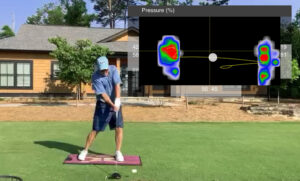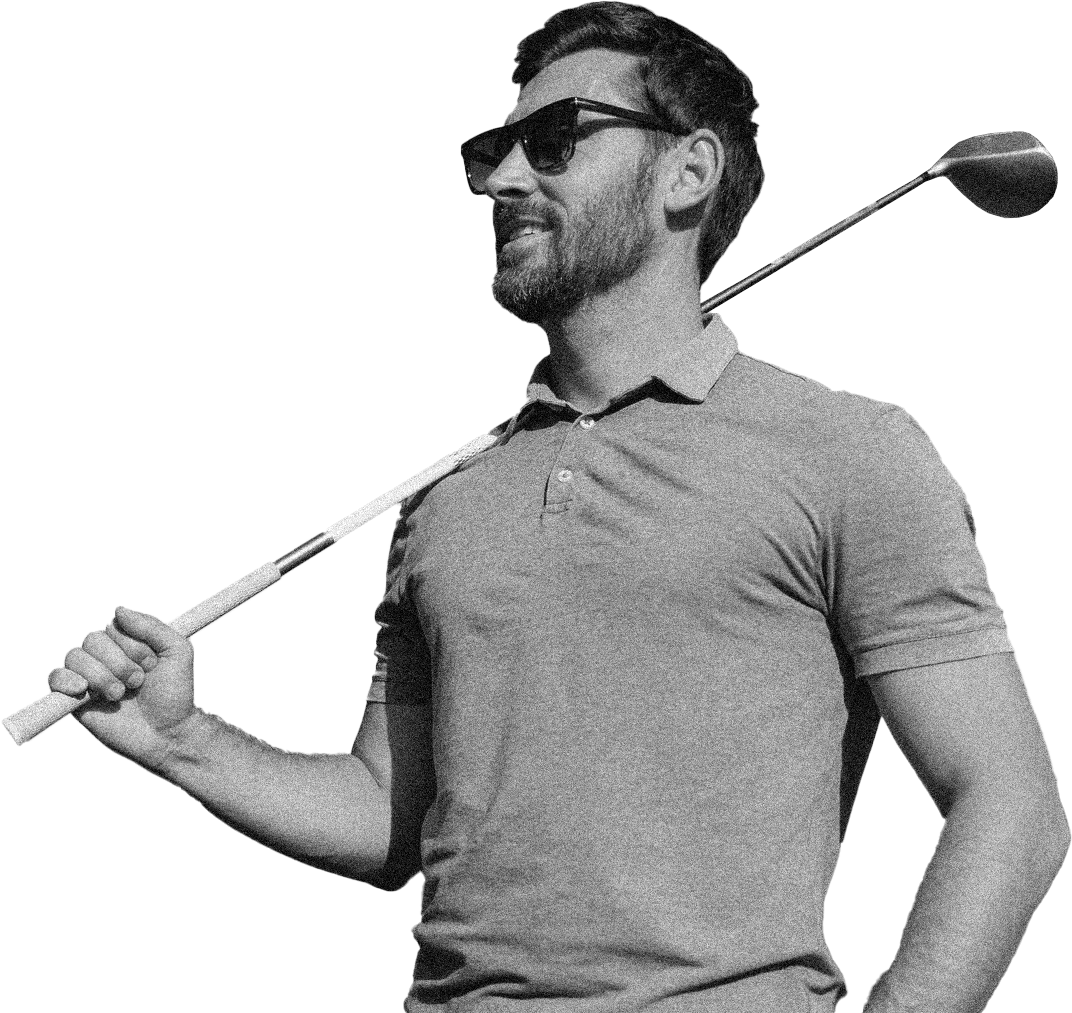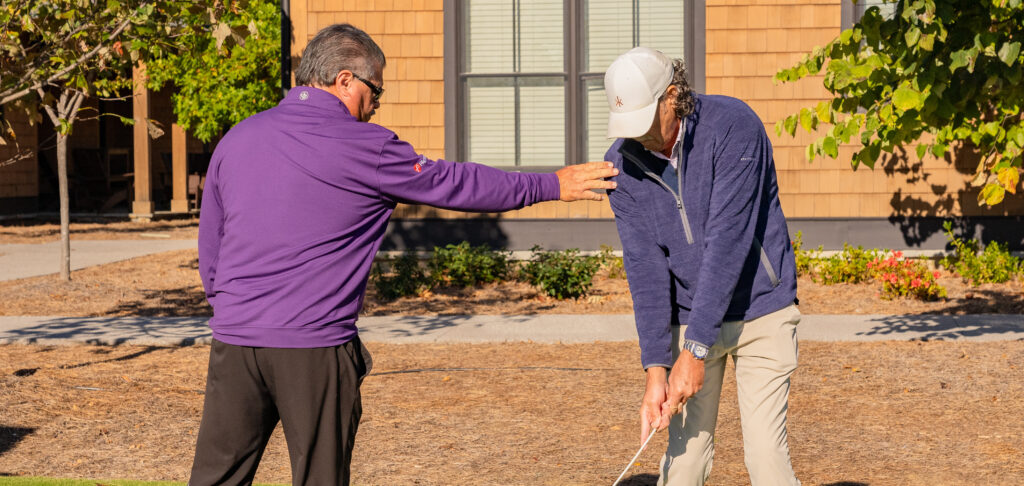When I conduct 3-day golf schools in Florida, or at McLemore Resort, I’m often asked by clients “why did I do that?” Meaning, why did the ball fly where it did. My patented reply is “where was the club at impact?” And immediately the client will search for what they felt at the moment of impact. And relay that feeling to the position the club was in at impact. Rationally, the eyes saw what happened. But that feedback had to correlate to what the body felt at impact. And then to the club. Touch and Feel is the most important sense in golf.
Each of the five senses does play a role in your ability to excel at golf. Your senses assist with the precision and finesse you need to reach your potential. But there is just one sense that reigns supreme. Just one that if allowed to do its job, provides the consistency you’re searching for. This sense also requires a tremendous amount of trust in yourself.
A Sensory Exploration
Both on the course and while you’re making improvements. Without question, sight, hearing, taste, and smell play a role in your ability to create a well struck shot. Or when draining a long putt for birdie. But it is the sense of touch and feel that plays the most vital role in your ability to lower your scores, improve your statistics, and enjoy the game to its fullest.
You may argue that seeing is paramount. You’re correct, if all you’re concerned with is the result of your swing. Which is what most golfers are most concerned about. However, there’s a lot that goes on prior to you even getting close to your golf ball. And even more goes on as you prepare to pull the trigger to make the swing. Which makes your hidden sense, the sense you downplay, that makes all senses come together when it counts. Feel and touch.
Exploring the Other 4 First
Before we dive headfirst into the sense of touch, let’s examine the other 4 senses and the role each plays in your game and skill development.
Smell and Taste: Peripheral Identifiers of Pleasures of the Course
While the golf course might offer refreshing scents of freshly mowed grass. Or the subtle aroma of pine trees. Or the tempting char of a burger coming from the nearby halfway house. Smell does play a role in how you determine what shot to hit and where to hit it. Based upon where the odor is coming from, smell can assist you with finding wind direction. But other than that, smell plays less, if not any role, in how you develop and maintain swing mechanics when it counts.
Same holds true to taste. The taste of a golf shot comes in the form of a well-earned beverage afterward your round. Or if you lick the golf ball to clean it. Taste has almost no role in your improvement journey.
Hearing: Listening to the Environment, Game, and Impact
The auditory aspects of golf do add a layer of feedback to learning to play better. Whether you’re hearing suggestions from a caddie. Or the swoosh of your club. Or better yet, the soft click of the ball off the club when you compress it.
Suggestions from coaches, caddies, and the unsolicited advice from friends are all uses of hearing prior to making the shot happen. And the swoosh and impact sounds are indications of how fast or how well you swung the club. While these sounds enhance the experience of practicing or playing golf, hearing is a secondary sense when it comes to improved performance.
Sight: It’s Normally 90%
Without a doubt, your eyesight, how you see yourself on the course. And how you see the result of your swing. As undeniably crucial in golf. 90% of the information your brain receives every second of every day is through your sense of sight.

Our eyesight guides us to aim our shots at exacting targets. Eyesight assesses how far we are from those targets. As well as reading the contours of the greens. From the moment we address the ball to the final roll into the cup, our eyes provide a primary feedback loop for our actions. And that is the key to using your eyes to improve your skills.
Eyes provide feedback. And if you don’t evaluate the feedback your eyes provide with every swing, the 5th and most important sense in golf can’t function fully.
All too often John Hughes Golf, we witness golfers at practice ranges work themselves into a lather of practice. Raking a ball to the mat or behind the last divot while the shot they just made is still in the air. If you’re someone who does this, how can your eyes fully appreciate and communicate back to your brain the feedback necessary to improve?
How can the brain communicate to the body that it performed as planned when you do not see a well struck shot fall to the ground and roll out? How can your body know it did not do what you asked if you’re consumed with rolling the next ball over to hit it when the shot you just hit pummeled the person beside you?
Despite its prominence in our everyday lives, sight alone cannot guarantee a perfect swing or a precise putt.
Touch and Feel: The Sense that Sets the Pros Apart
When we talk about the essence of golf, it often comes down to our sense of touch or feel that becomes the magic dust we’re in search of.
Touch encompasses the tactile feedback our brains are searching for to inform your body of how it performed the task at hand, hitting a golf ball to a target. From how your hands hold the grip. To how you balance your body as you swing the club. Or what impact truly feels like when the ball is compressed fully in the middle of the club face. And the smoothness and rhythm of a well stroked putt. It’s all about feel. And your brain and body remembering and repeating the feels that produce the most efficient movements possible in your golf swing.
Balance and Feedback: Starts with Your Feet
An example of feel in golf is how your feet interact with the ground. Without balance, a swing can’t sustain itself. In collaboration with your eyes, your body must establish and maintain dynamic balance,

balance while in motion, to produce a repeatably good golf swing. If your feet become out of balance, your eyes confirm so by seeing you fall in one or more directions to the ground. It’s at this point the equilibrium takes over to keep you balanced. And your feet must immediately reestablish balance to prevent you from falling over.
Another example of your feet feeling and providing feedback is how your feet interact with the earth. As you walk the fairway is it wet or dry? Soft of firm? As you assess and read your putt your feet feel gravity and the terrain of the green. The firmness of the green assisting with speed control.
From the moment you step out of your vehicle at the golf course, your sense of feel and touch are made aware of your surroundings and how you’ll provide balance and feedback to your brain for the next 4+ hours.
Why Touch and Feel Triumphs
Touch is the ultimate of all 5 senses that sustains improvement of your golf skills. Without it, you can’t yell out loud, “Damn, I did that again!” yes, you and all golfers are making that statement at least once in your life. How did you know you did that again? You felt a difference between what you normally do in your swing. Versus what you desire to feel in your swing. If this is not an indication of touch and feel being the catalyst of your improvement, nothing else will.
Here are just a few of several reasons why Feel and Touch are paramount to your success in improving your golf skills.
- Precision and Control: Golf demands precise control over the club and ball. The ability to feel subtle variations in grip pressure, swing arc, and impact allows players to adjust in real-time, adapting to changing conditions effortlessly.
- Subtlety in Putting: Putting is where touch shines brightest. A delicate touch can mean the difference between sinking a birdie putt and watching the ball lip out. Players rely on tactile feedback to judge the speed and break of the green, often more than their visual or auditory cues alone.
- Adapting to Conditions: Weather, terrain, and even the mental state of the player can influence a golf shot. Touch provides immediate feedback that helps players adapt their game—whether it’s adjusting for a crosswind or reading a downhill lie.
- Connecting with the Game: Beyond technique, touch fosters a deeper connection with the game itself. It’s about the kinesthetic awareness that comes from years of practice, the intuitive sense of what a perfect shot feels like.
What does it all Boil Down to? The Science of How Your Body Learns new Movements
There are countless studies confirming the need for the neurons of your brain to associate new movement patterns with comparable differences in 2 similar but different movements. To dummy those studies down a bit, here are 3 items you need to consider from a scientific standpoint to achieve the desired and sustained improvements you seek in your golf swing.
- Proprioception: Feeling allows us to develop a strong sense of proprioception, which is the body’s ability to sense its position and movement in space. This is essential for maintaining a consistent swing path and controlling the clubface.
- Feedback: Touch provides immediate feedback on the quality of a shot. The sensation of a solid strike or a mishit can help golfers adjust their swing and improve their performance.
- Intuition: Feeling can develop a golfer’s intuition, allowing them to trust their instincts and make decisions on the course. Sometimes, the best shot is the one that feels the most natural.
Conclusion
I can go on and on about how touch and feel are the most important sense in golf. But I’ll stop here. Because I want you to feel a sense of urgency to adapt your learning to feeling. Right now!
Yes, you can use your eyes to assist with the confirmation or denial of what you just performed as being what you desire to do every swing. But relying on sight alone has its drawbacks.
Yes, you can hear a good swing. But those sounds must be matched to what produced the swing. And that story is told by how you felt the swing produce the sounds you hear.
While each sense contributes uniquely to the golfing experience, it’s the sense of touch that separates good players from great ones. It’s the delicate dance between player and club, ball and green, where the magic of golf truly unfolds. You can count on John Hughes Golf emphasizing touch and feel during every coaching session. And all 3-day golf schools in Florida.
While sight and other senses play their roles, feeling is the underlying foundation of a golfer’s game. By cultivating a strong sense of touch and proprioception, golfers can develop a more consistent and effective swing, leading to improved scores and greater enjoyment of the game.
Next time you step onto the fairway, remember to trust your instincts, hone your touch, and let the game speak to you through the sensations that only golf can offer.






